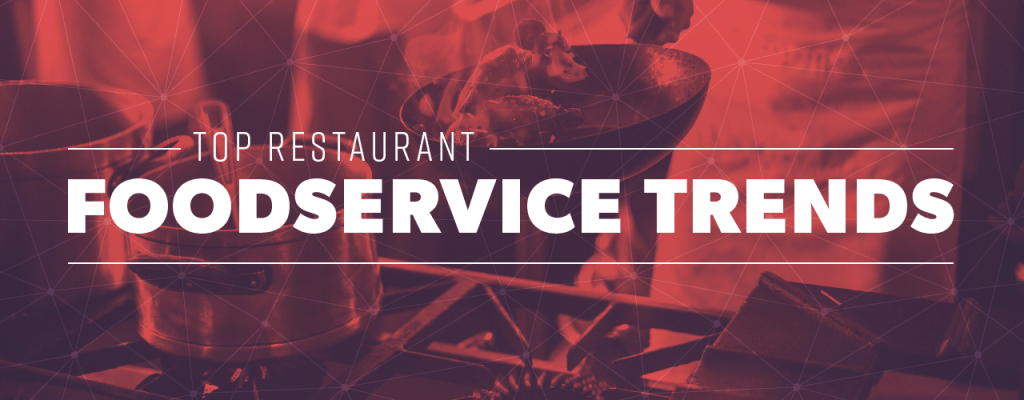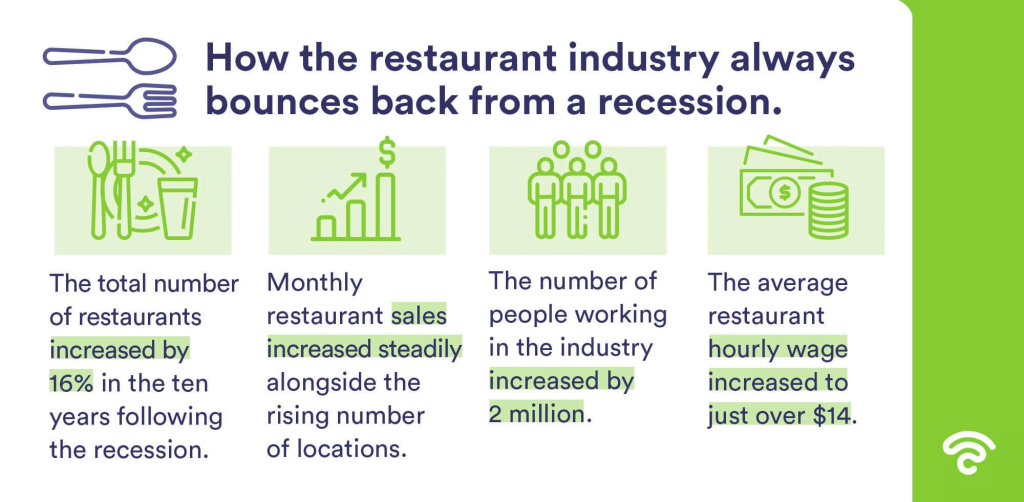
The business outlook for the restaurant industry in 2024 will remain a formidable challenge, as it is harder than ever before to deal with the economic and social issues, from inflation, scarce venture capitalists and cost and quality of labor to consumers’ price sensitivity, sluggish traffic and fierce competition. That said, development costs will remain high and full-service fees could cause guests’ discomfort, but personalized offers and new labor-saving technology may give national brands an edge.
Service fees can help full-service restaurants manage labor costs and offer team members competitive pay and benefits that lead to retention, but it’s crucial not to alienate cost-conscious consumers. Restaurants may deploy artificial intelligence and other labor-saving technology to manage costs. Chains are also trimming build-out costs for franchisees to encourage expansion despite high interest rates and construction costs.
Menu experimentation will continue to center around value offerings at major chains. But some restaurants will grow their appetizers, snacks and premium items as well as their customizable beverage offerings in a bid to grow mid-afternoon traffic and capture younger diners. Customization will continue to sweep through restaurant loyalty programs too, as operators shift some of their spending from market wide offers to more targeted perks.
More full-service chains will embrace service fees
Service fees will likely proliferate across the country. Chicago will phase out tipped minimum wage over the next five years, while states like Alaska, California, Minnesota, Montana, Nevada, Oregon and Washington don’t have a tip credit. At some point down the road that service charge is going to be everywhere. Many operators designate service fees as a way to cover team members’ healthcare, or to help pay a living wage. Service fees, combined with set hourly wages, help create more stability for team members, but this model layers on extra costs and complexity for restaurateurs.
Service charges can incur risk too, however, as these line items can frustrate price-sensitive diners. The Federal Trade Commission said that it intends to regulate restaurant service fees, and a California law that took effect last July will ban “junk fees,” though it’s unclear if this will impact eateries.

Chains will focus on value, take smaller price hikes
Restaurant prices hikes are expected to soften in 2024 compared to the low double-digit increases of 2023, which have pushed diners to their limit. Restaurant Analysts expect pricing to range between 3% and 5% this year given that commodity and labor costs have dropped. Fewer operators plan to increase pricing in 2024. While consumers have taken pricing well, further increases could start pinching consumers.
We’ve hit the top end of consumers’ willingness to pay. 2024 is going to be a real year of optimizations. Restaurants are going to have to figure out ways to run more effective businesses. To optimize efficiency and overall experience, restaurants could temporarily scale down their menus or use technology to change the composition of recipes. There is a lot of price sensitivity among consumers right now, and brands are continuing to research and get the pulse of the consumers and what really resonates. It’s taking your existing menu configuration and engineering for value and then innovating for value as well.
There will be a point where consumers say, I’m just going to make a sandwich, I’m just going to make my food at home. That potential end of pricing power could make it harder for restaurants to absorb the cost of developing new menu items to keep pace with diner trends.
Chains will continue to reduce operational complexity in their kitchens to manage menu costs.

Marketing considerations are likely to drive menu innovation. Younger consumers responded well to McDonald’s celebrity branded LTO meals. Caffeinated beverages that aren’t coffee or soda are moving into foodservice. In foodservice, it takes on an even more particular kind of crafted, healthy, customizable lens. It’s not just a straightforward energy, but maybe it’s energy plus focus or energy plus hydration.
AI adoption will grow, especially in the back of house
Restaurants rushed to incorporate artificial intelligence to their technology stacks in 2023 to smooth kitchen operations and improve service times by alerting operators, delivery drivers and kitchen staff when to prepare orders. Experts expect this innovation to continue in 2024 year as chains fine-tune their operations for speedy fulfillment of omnichannel orders.
The most interesting applications of AI are going to be invisible to guests, such as kitchen display systems that can help measure and manage kitchen throughput. AI investments are more likely to be for back-office processes and in data collection rather than actual food production, though certain chains are looking for efficiency in cooking.
The drive-thru is a space where AI investment will be especially prominent. AI powered menu boards that can upsell patrons or change offerings based on the guests’ identity and purchasing history, will likely see more experimentation in 2024 as chains look to reduce labor costs.
Artificial intelligence can help collect more detailed information about guests’ behavior. The biggest opportunity for restaurants with technology is finding ways to mine a treasure trove of consumer information that operators may not be able to translate otherwise.
Chains will lean on technology to cover rote tasks, deepen retention
The restaurant labor market has slowly begun to improve, but operators will seek opportunities to displace rote tasks, such as placing orders for guests so staff can focus on high hospitality moments. It’s not about removing labor from the restaurant. It’s more about increasing labor productivity and increasing hospitality for the guest.
Handheld devices are also becoming more popular across full-service restaurants as a way to improve service and quickly turn more tables, which can yield more opportunities for tips as well as additional sales, Solar said. These benefits can ease pressure to raise prices, as well. Handhelds are becoming critical in full-service restaurants. Companies had to restructure their staff and how they are compensated. They also needed to bring in more technology to help maintain costs so they wouldn’t have to pass as much on to the consumer.
Technology will also become an increasingly common part of restaurants’ retention equation as they work to keep high-value talent without racking up costs. Finding the right technology equation that frees up time, space and money to continue to hire and take care of and retain and grow your best team members is the problem every restaurant is trying to crack.
Automating or digitizing common industry tasks, such as team members’ training, restocking and supply chain management, or introducing new efficiencies like same day pay, can significantly improve team members’ experience and satisfaction.

Personalization becomes synonymous with loyalty
Loyalty programs and overhauls to existing rewards platforms proliferated in 2023 as restaurants aimed to deepen engagement with high-spend consumers. In 2024, experts expect chains to improve their customer data processing to offer more meaningful personalization to their loyalty schemes. We’re living in a moment where there’s so much data about every guest, but it’s not collated in a helpful way. So many of the transactions that happen are anonymous, nameless, faceless transactions, and each one of them is a clue into that guest.
In 2024, more full-service chains will begin to adopt personalized loyalty offers, such as offering customers new access to reservations once they hit a specific spend threshold. Personalization can also ease the tension between consumer desire for hospitality and the implementation of technology that speeds up the restaurant experience.
But the value of personalization through technology, rather than a connection with a human being, is most important for restaurants, as consumers are interested primarily in getting the right food and getting it fast. It comes down to what the consumer expects. Those brands which are able to meet guests where they are, rather than trying to engineer consumer behavior, are more likely to be successful. It’s a really big lift to change your customers’ behavior. They’re telling you what’s easiest and what they want, so make sure your technological solutions, including loyalty are going where the heat is.
Development will moderate due to capital constraints, high costs

Unit development will slow modestly in 2024 due to high interest rates and construction costs 30% above pre-pandemic levels, Collier said. With interest rates and construction costs still high, brands may use smaller formats or modular builds to mitigate development costs.
According to Restaurant 365, 57% of operators said they would grow brick-and-mortar locations in 2024 compared to 60% in the previous year. Of those planning to expand, 25% said they will open one location, 28% will open two to five locations and 4% will open six or more this year.
Demand remains high for franchising, however, and agreements with operators will continue to be signed. But franchisees may try to put off the actual building for a bit.
Chains are also decreasing buildout costs for franchisees by offering smaller prototypes. Certain companies are using real estate analytics to find ideal locations and will deploy a new prototype in 2024 that will have multiple guest queues and drive-thrus.
Some development challenges, especially those derived from the cost of raising capital, might be a reversion to a historical mean.
The Federal Funds rate, a key driver of the cost of capital, is the highest it has been since before the 2008 recession, but the consistently low level of the funds rate between 2008 and 2022 looks like an anomaly given that the funds rate remained above 5% between the middle of the Lyndon Johnson administration, from 1963 to 1969, and the Dot Com bubble, from 1999 to 2001, with some momentary periods of low rates. This January, 2024, the Federal Reserve hinted that it was unlikely to cut rates in the immediate future. Similarly, JP Morgan Chase’s prime rate, a measure of the general cost of borrowing money, was consistently higher than 7% or 8% for much of the last 40 years. The industry has set valuations expectations and return parameters, on near zero cost of capital. There’s an adjustment that needs to be done.
Here are a few ‘teasers’ for what will be trending in 2024, which we will discuss at length during the year:
- Super spicy condiments
- Innovative plant-based cuisine
- Nonalcoholic spirits and wine
- Little luxuries
- Snacks for dinner
- Botanical and floral-based everything





